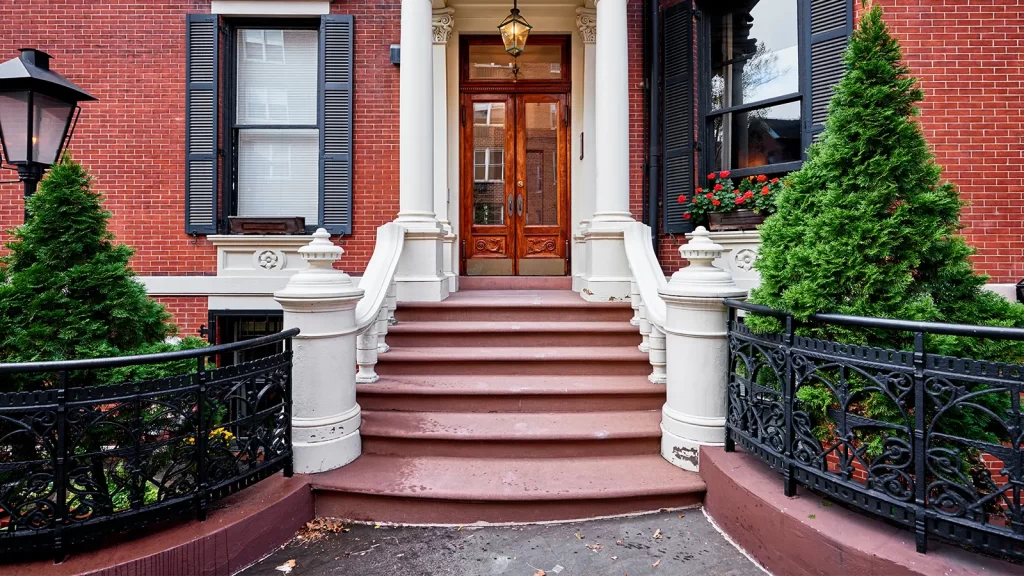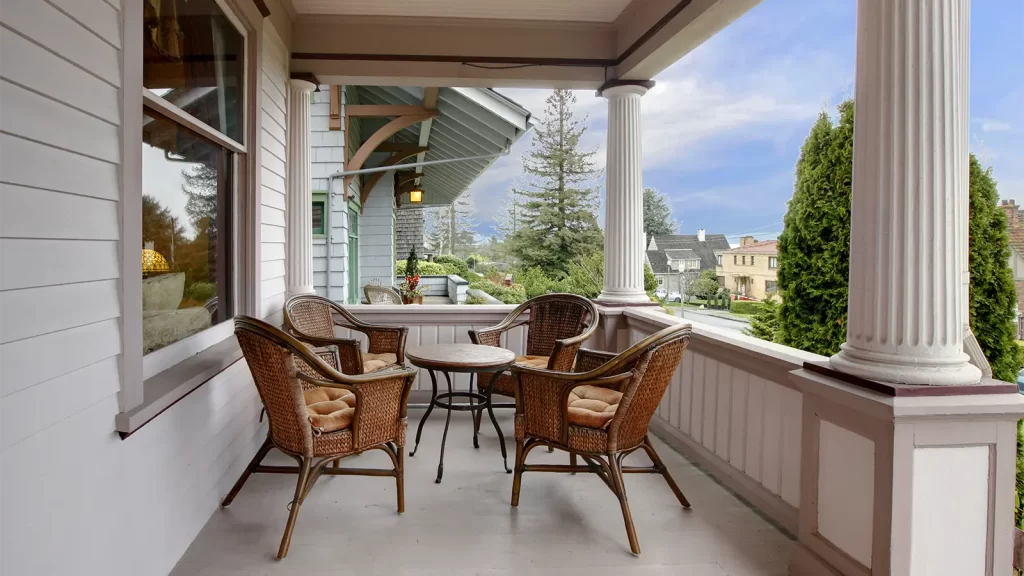The Historical Significance of Porches
To understand the historical significance of porches, one must consider the cultural and societal contexts that shaped their evolution. In the 19th century, porches were symbols of hospitality and status, reflecting the homeowner’s desire to engage with their community. Victorian-era porches, adorned with intricate woodwork and ornate detailing, spoke of prosperity and architectural exuberance. As architectural styles evolved into the Arts and Crafts movement, porches became more functional, emphasizing simplicity and connection to nature. Porch restorations are important to your home’s historic charm
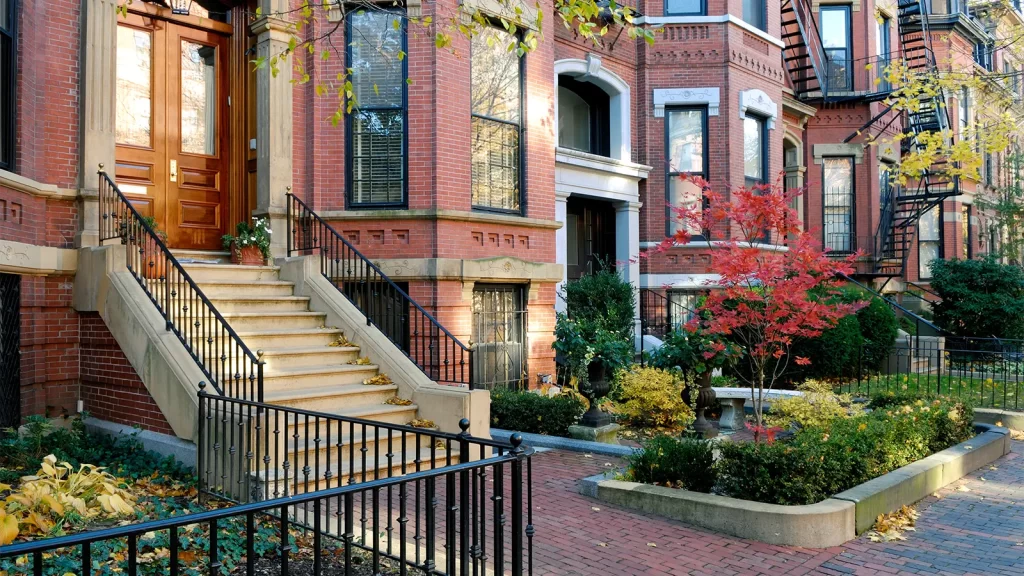
Restoring with Purpose
Porch renovation, beyond its pragmatic aspects, is a purpose-driven endeavor rooted in a deep appreciation for the craftsmanship of yesteryears. It’s a conscious decision to resist the throwaway culture and embrace sustainability. Utilizing existing materials not only preserves the authenticity of the porch but also reduces the environmental impact of construction. Purpose-driven restoration emphasizes the importance of maintaining a connection with the past while adapting to the needs of the present and future.
Choosing the Right Materials
The selection of materials in porch restoration is a delicate balancing act between preserving historical accuracy and ensuring durability. Reclaimed or salvaged wood, with its aged patina and character, becomes a crucial element. It’s not just about replicating the appearance but also capturing the spirit of the original craftsmanship. Balusters, columns, and railings crafted from these materials are more than aesthetic components; they are tangible links to the hands that shaped them decades or even centuries ago. Brick and concrete are also long-lasting materials.
Preserving Architectural Details
The intricate details adorning historic porches are a testament to the artistry of skilled craftsmen. Restoring these details involves not only replicating but also understanding the techniques and design principles employed in their creation. Carvings, moldings, and decorative elements are meticulously brought back to life, ensuring that the restored porch tells a coherent story. Skilled artisans play a crucial role, employing traditional methods to revive details that might have been lost to time.
Addressing Structural Issues
Beyond the surface, porch restoration dives into the structural aspects, ensuring that the renewed porch stands on a foundation of strength. The examination of the porch’s framing, foundation, and support structures is akin to a diagnostic check-up. Rot, termite damage, or structural compromises are identified and addressed with precision. This phase of restoration isn’t just about aesthetics; it’s about guaranteeing the porch’s longevity, making it resilient to the challenges of both time and weather.
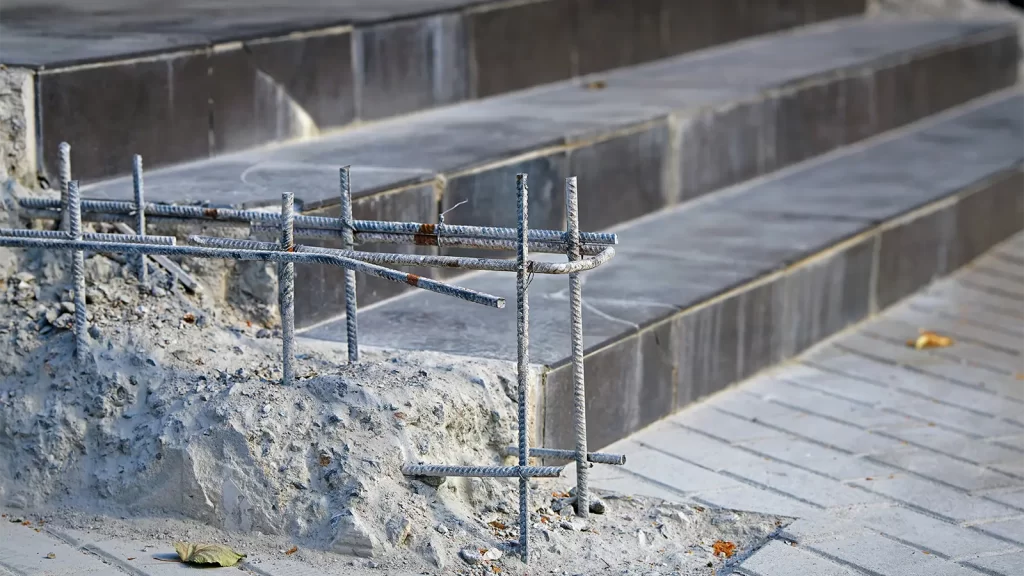
Weather-Resistant Finishes
Preserving a historic porch necessitates more than visual enhancements; it demands protection against the elements that can accelerate wear and tear. Weather-resistant finishes, including paints, stains, and sealants specially formulated for historical structures, serve as a shield against rain, sun, and temperature fluctuations. These finishes not only extend the life of the restoration work but also play a critical role in maintaining the structural integrity of the porch. The careful application of these finishes is a testament to the commitment to both aesthetic and functional longevity.
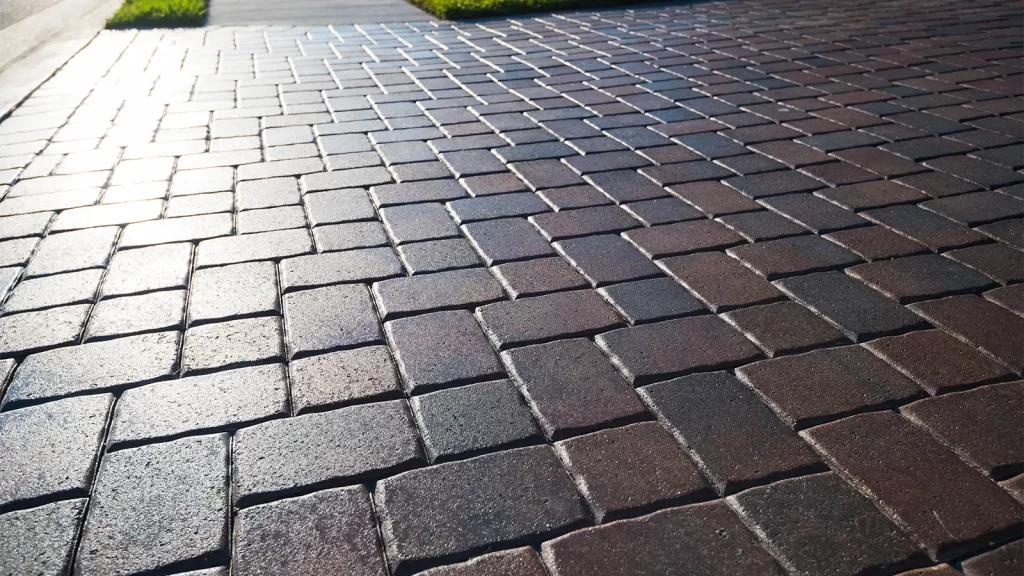
Community Engagement and Approval
In historic districts, porch restoration is not just a personal project; it’s a community affair. Engaging with neighbors and seeking approval from historic preservation boards is an essential aspect. Beyond regulatory requirements, community engagement fosters a sense of shared responsibility for preserving the neighborhood’s architectural heritage. Workshops, community meetings, and collaborative efforts ensure that the restoration aligns with the collective vision and values of the community. Porch restoration becomes a shared journey, connecting homeowners with their neighbors and contributing to the broader cultural tapestry.
Conclusion
As the porch restoration journey unfolds, it becomes more than a physical transformation; it’s a process of reconnecting with history, community, and the intrinsic value of preserving the past. Restoring a porch is an act of stewardship, where homeowners not only reclaim a piece of their home’s history but also contribute to the broader cultural heritage of their community. In an ever-changing world, porch restoration stands as a beacon, reminding us of the enduring value of the past and the significance of tangible connections in our homes and communities.

